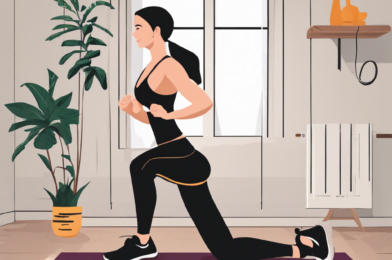The gut-brain connection is a fascinating and increasingly studied area of health research, revealing just how integral our gut health is to our overall well-being, including our mood and mental health. We’ve all experienced the “butterflies in the stomach” sensation when nervous or that feeling of being “gut-wrenched” when something terrible happens. These expressions exist for a reason; they highlight the very real physical connection between our emotions and our gut. But it’s not just a one-way street – our gut health can also impact our mood and mental clarity.
So, how exactly are our gut and our brain connected? Firstly, they are physically linked via the vagus nerve, which runs from the brain to the colon. This nerve acts as a direct line of communication between the two, allowing them to influence each other. A healthy gut contains a diverse range of bacteria, known as the microbiome, which play a crucial role in maintaining overall health. These bacteria not only aid in digestion and nutrient absorption but also produce neurotransmitters and other chemicals that influence our brain function and, consequently, our mood.
For instance, serotonin, often referred to as the “happy hormone,” is largely produced in the gut. It regulates sleep, appetite, mood, and contributes to feelings of happiness and well-being. Therefore, a healthy gut with a diverse microbiome can support the production of serotonin and other mood-regulating neurotransmitters. On the other hand, an imbalance in the gut bacteria, known as dysbiosis, has been linked to mood disorders, including anxiety and depression. This is why maintaining a healthy gut is so important – it can quite literally change our mood and outlook!
Our diet has a significant impact on our gut health. Eating a variety of whole foods, including fruits, vegetables, legumes, and fermented foods, can nourish and promote a diverse microbiome. Conversely, processed foods, high sugar intake, and an unbalanced diet can disrupt the gut’s delicate balance, leading to potential negative consequences for our mood and mental health. Additionally, chronic stress can also impact our gut health. When we’re stressed, our body redirects blood flow away from the digestive system, reducing its efficiency and disrupting the balance of bacteria. Finding ways to manage stress, such as through exercise, meditation, or deep breathing, can help support not only our mental health but also our gut health.
Probiotics and prebiotics have received a lot of attention in recent years, and for good reason. Probiotics are live microorganisms, typically consumed in supplement form or through fermented foods like yogurt and kefir, that introduce beneficial bacteria into the gut. Prebiotics, on the other hand, are a type of fiber that acts as food for the beneficial bacteria, promoting their growth and activity. By incorporating probiotics and prebiotics into our diet, we can actively support the health and diversity of our gut microbiome.
The relationship between gut health and mood is a complex and personalized journey. While improving gut health may not be a cure-all for mental health issues, it can certainly play a supportive role in overall well-being. Paying attention to our diet, managing stress, and considering the use of probiotics and prebiotics are all steps towards nurturing a healthy gut and, by extension, supporting our mood and mental clarity. As the field of research expands, we will undoubtedly uncover more insights into the intricate gut-brain connection and develop further tools to enhance our overall health and happiness.
The gut-brain axis is a bidirectional communication system, meaning that just as the health of our gut can influence our brain, so too can the health of our brain impact our gut. Mental health disorders, such as depression and anxiety, can have very real physical effects on our digestive system. For example, individuals with depression often experience changes in their appetite and weight, as well as digestive issues such as constipation or diarrhea. These physical symptoms are a reminder that the gut-brain connection goes both ways and that our mental and gut health are deeply intertwined.
The use of antibiotics, while often necessary to treat bacterial infections, can also disrupt the balance of bacteria in the gut. Antibiotics do not discriminate between harmful and beneficial bacteria, meaning they can wipe out some of the good bacteria that are essential for a healthy gut. This disruption can lead to digestive issues and may even impact mood and mental clarity. It’s important to be mindful of this when taking antibiotics and to consider ways to support the replenishment of good bacteria, such as through probiotic supplements or fermented foods.
The gut-brain connection has significant implications for our understanding and treatment of mood disorders. For example, individuals with irritable bowel syndrome (IBS) often experience symptoms such as abdominal pain, bloating, and altered bowel habits, which can be triggered or worsened by stress. This connection between gut health and stress-related brain function highlights the potential for targeting the gut as a therapeutic approach for mood disorders. Researchers are exploring this avenue, investigating the potential of prebiotics and probiotics as additional tools in the treatment of stress-related disorders and depression. The hope is that by modulating the gut microbiome, we may be able to positively influence mood and cognitive function.









